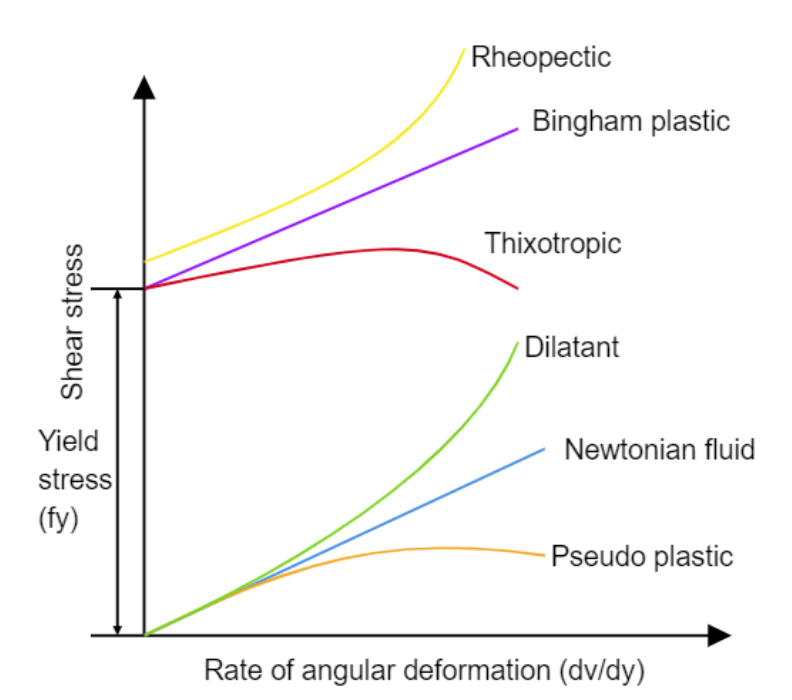Fluids, including liquids and gases, fall into two categories: Newtonian fluids and non-Newtonian fluids. A key difference between these two fluids is that they respond differently to the applied forces. The rheology of non-Newtonian fluids changes dramatically under processing conditions, however, that of Newtonian fluid remains constant.
Newtonian fluids: These fluids obey Newton’s law of viscosity and have a linear correlation between the rate of angular deformation and shear stress. In such fluids, viscosity remains constant regardless of shear rate. Water, air, glycerine, gasoline, alcohol can be taken as examples of these Newtonian fluids.
Non-Newtonian fluids: These fluids do not obey Newton’s law of viscosity and the viscosity declines or enhances respective to the type of fluid under applied shear. The five ways, describing how non-Newtonian fluids behave, are explained as follows (figure 1):
- Dilatant: The viscosity of the fluid increases with an increase in shear stress. Quicksand and mud slurry are two examples of dilatant fluids.
- Pseudoplastic: The viscosity of the fluid decreases with an increase in shear stress. Blood and ketchup are two examples of pseudoplastic fluids.
- Bingham plastic: These fluids, like oil paint, have a linear relationship between the rate of angular deformation and shear stress. The difference between these fluids and Newtonian ones is that they have internal yield stress making them a time-dependent relation.
- Rheopectic: The viscosity of the fluid increases with an increase in shear stress and the relation is time-dependent. Gypsum paste can be taken as an example.
- Thixotropic: The viscosity of the fluid decreases with an increase in shear stress and the relation is time-dependent. Paint and glue are two examples of thixotropic fluids.
References
[1] Newtonian and Non-Newtonian Fluids | Newton’s Law of Viscosity (apsed.in)

This article was written by Mahdieh Mosayebias part of an ongoing series of scientific communications written and curated by BioTrib’s Early Stage Researchers.
Mahdieh is researching the Design of Self Lubricating Prothesis at ETH Zurich, Switzerland.

